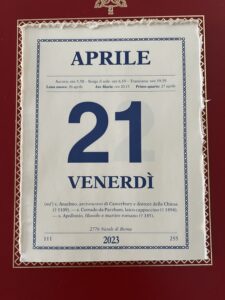
Today: Sunrise 0619 – Sunset 1959 – Ave Maria 2015
Today is the 2776the Birthday of Rome
Alme Sol, curru nitido diem qui
promis et celas aliusque et idem
nasceris, possis nihil urbe Roma
visere maius.
Q. Horatius Flaccus
Carmen Saeculare
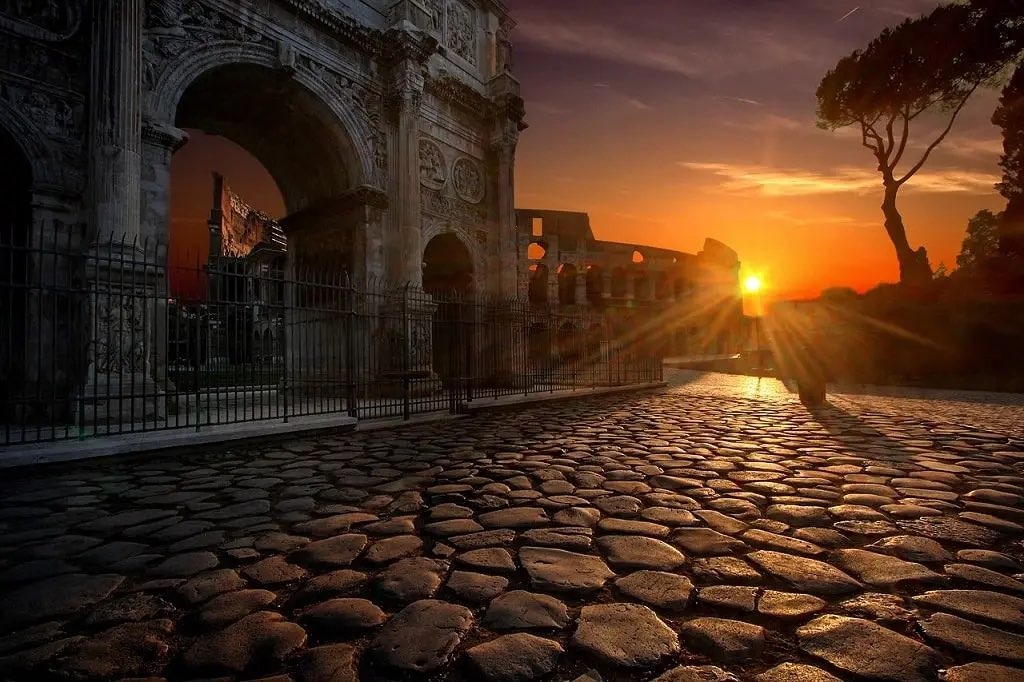
Photo from The Great Roman™
Welcome new registrant:
Firefly
The other day I was in Sant’Agostino. One of you readers asked if I would on 19 April go to San Pietro to pray for a young family man who has Parkinson’s. I don’t go to San Pietro these days if I can help it. So, I went to the tomb of a great favorite of mine, St. Monica, or in another spelling with 2-Ns, Monnica, the mother of St. Augustine and there prayed for the petitioner’s afflicted husband. A great saint who understands the need for diligent and confident prayer of petition.
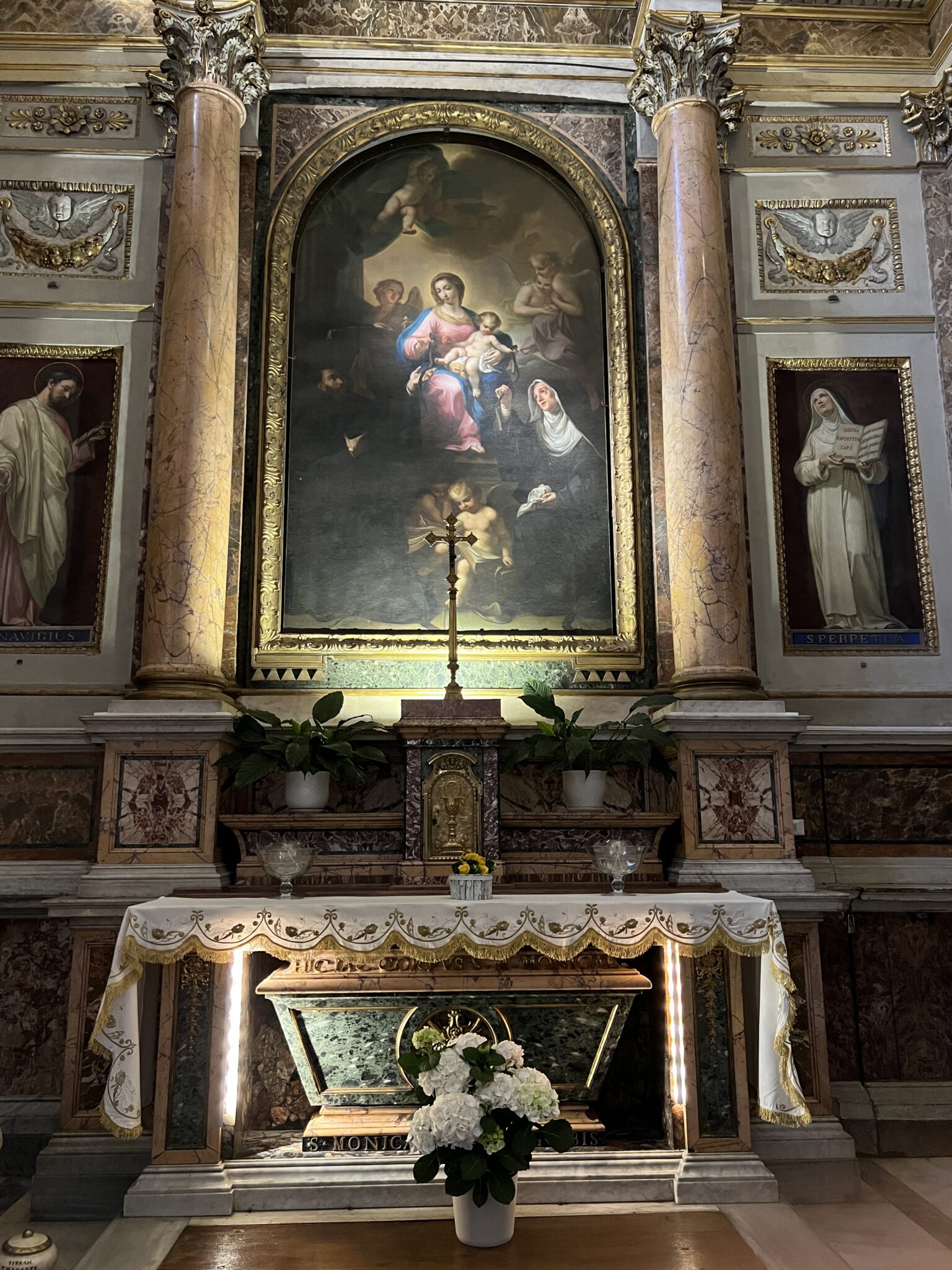
During my visit to the church I also stopped for a moment to admire the funerary monument of the scholar who figured out the dating of the founding of Rome, the dates we often see with the abbreviation A.U.C. (Ab Urbe Condita). As you know that condita comes from condo, condere, cOnditum and not condio, condire, condItum. If not, we would be saying “From the (year) the City was pickled” rather than “From the (year) the City was founded”. We get “condiments” from the later. In Latin it is good to get the accents right, as in the Vespers hymn Conditor alme siderum, just to throw another “alme” in today for spice.
The tomb of Onofrio Panvinio (1529 Verona – 1568 Palermo). Admire his stony countenance captured in cold marble, and say a prayer for the repose of his soul.
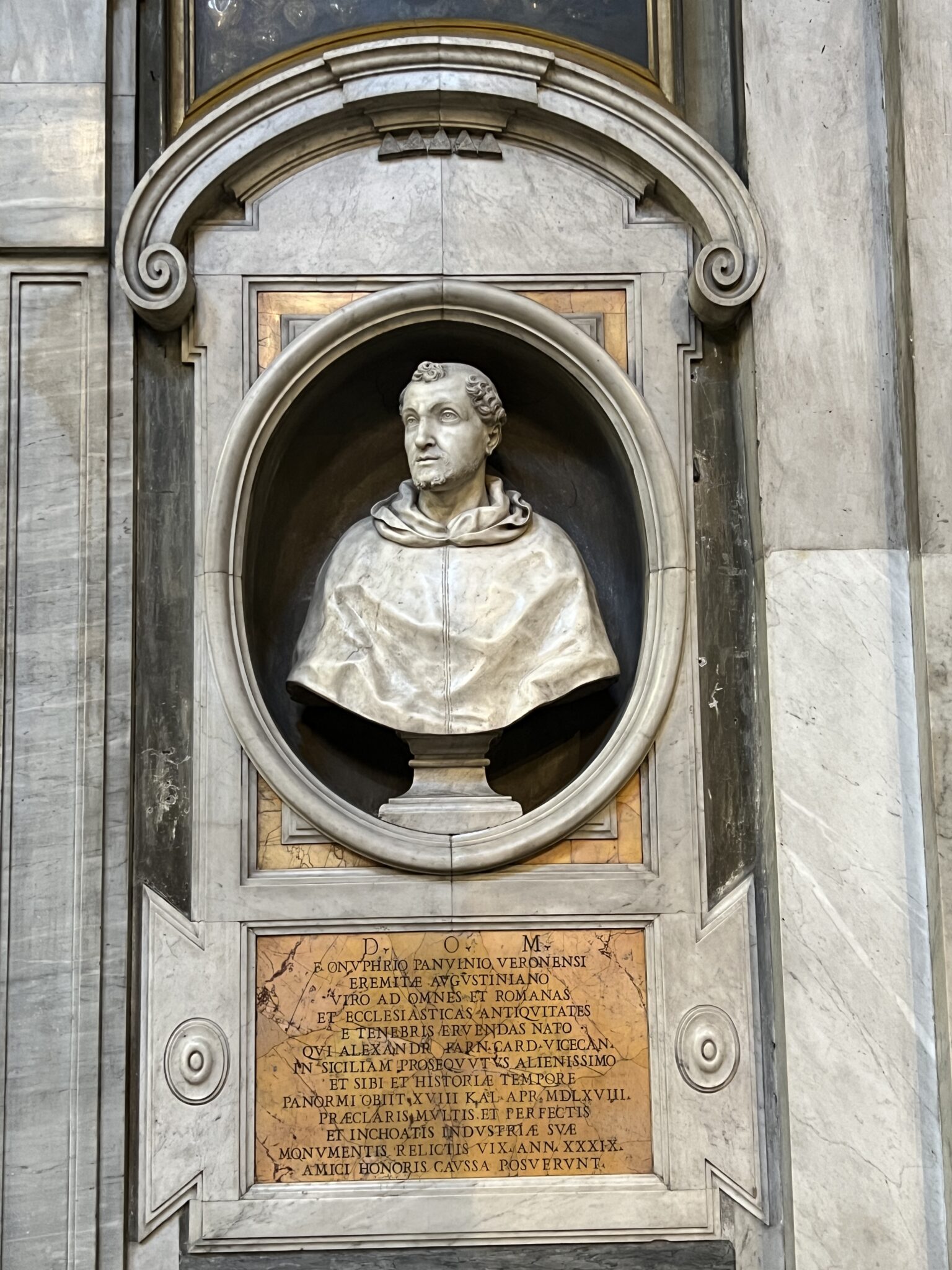
Onofrio was an Augustinian and great scholar. He is the author of such page turners as the 1557 work Fasti et triumphi Rom. a Romulo rege vsque ad Carolum V. Caes. Aug.:Sive epitome regum, consulum, dictatorum, magistror. equitum, tribunorum militum consulari potestate, censorum, impp. & aliorum magistratuum Roman. cum orientalium tum occidentalium, ex antiquitatum monumentis maxima cum fide ac diligentia desumpta. A ripping yarn!
Here is his monument inscription. Go ahead and take a crack at it!
D.O.M.
F. ONVPHRIO PANVINIO VERONENSI
EREMITÆ AVGVSTINIANO
VIRO AD OMNES ET ROMANAS
ET ECCLESIASTICAS ANTIQVITATES
E TENEBRIS ERVENDAS NATO
QVI ALEXANDR FARN. CARD. VICECAN.
IN SICILIAM PROSEQVVTUS ALIENISSIMO
ET SIBI ET HISTORIÆ TEMPORE
PANORMI OBIIT XVIII KAL. APR. MDLXVIII
PRÆCLARIS MVLTIS ET PERFECTIS
ET INCHOATIS INDVSTRIÆ SVÆ
MONVMENTIS RELICTIS VIX. ANN. XXXIX.
AMICI HONORIS CAVSSA POSVERUNT.
I like that 2-S caussa.
Right click for a larger image.
Another gift to humanity is found in this church. Caravaggio’s magnificent painting of La Madonna di Loreto.
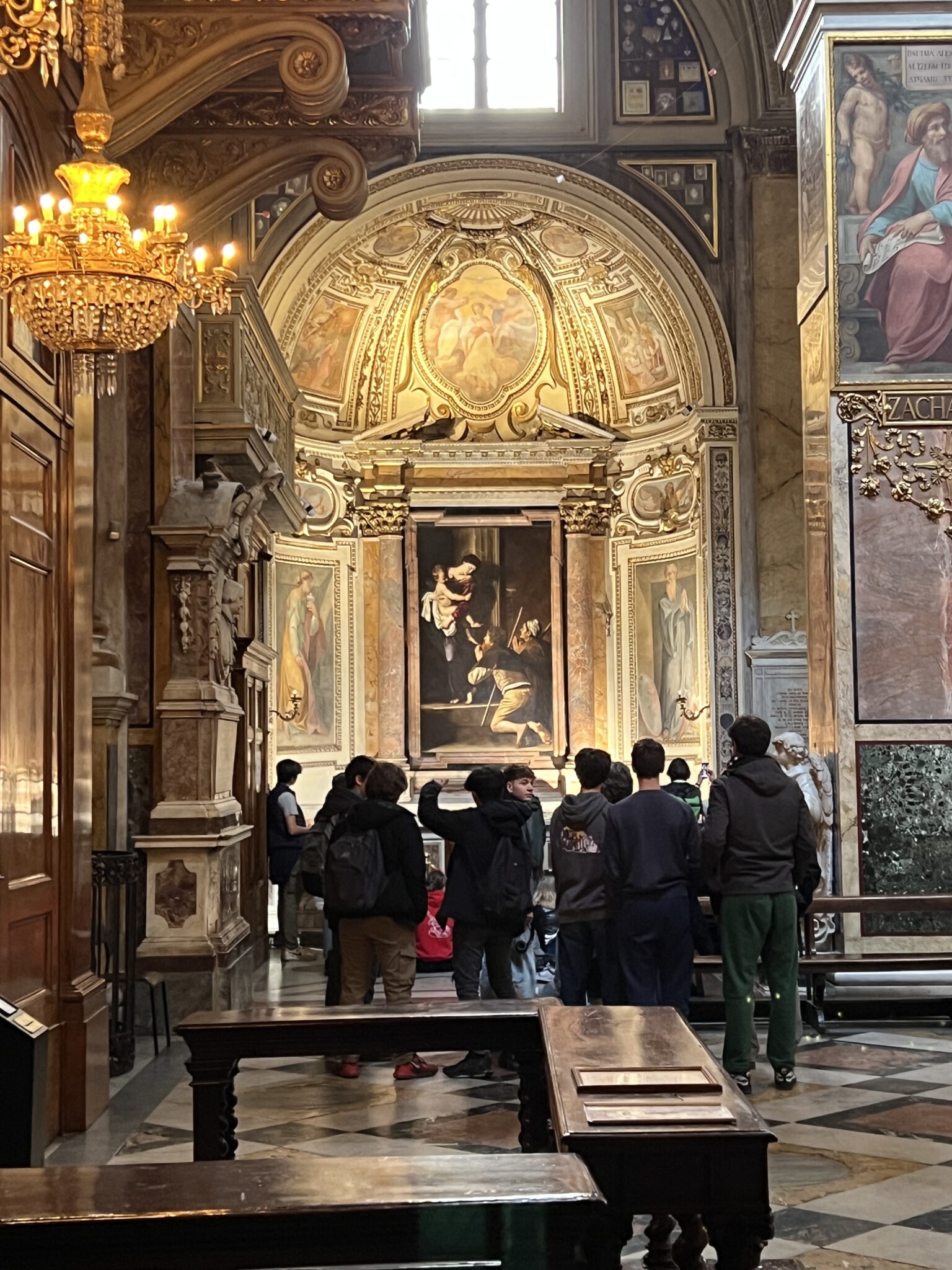
This in the Chapel of the Cavalletti Family, just inside the left door of the church. Ermete Cavalletti was a member of the Archconfraternity founded by St. Philp Neri at Ss. Trinità dei Pellegrini! Ermete died before Caravaggio painted this. It is probable that his widow and a couple of patrons of Caravaggio, who also belonged to Archconfraternity, commissioned it.
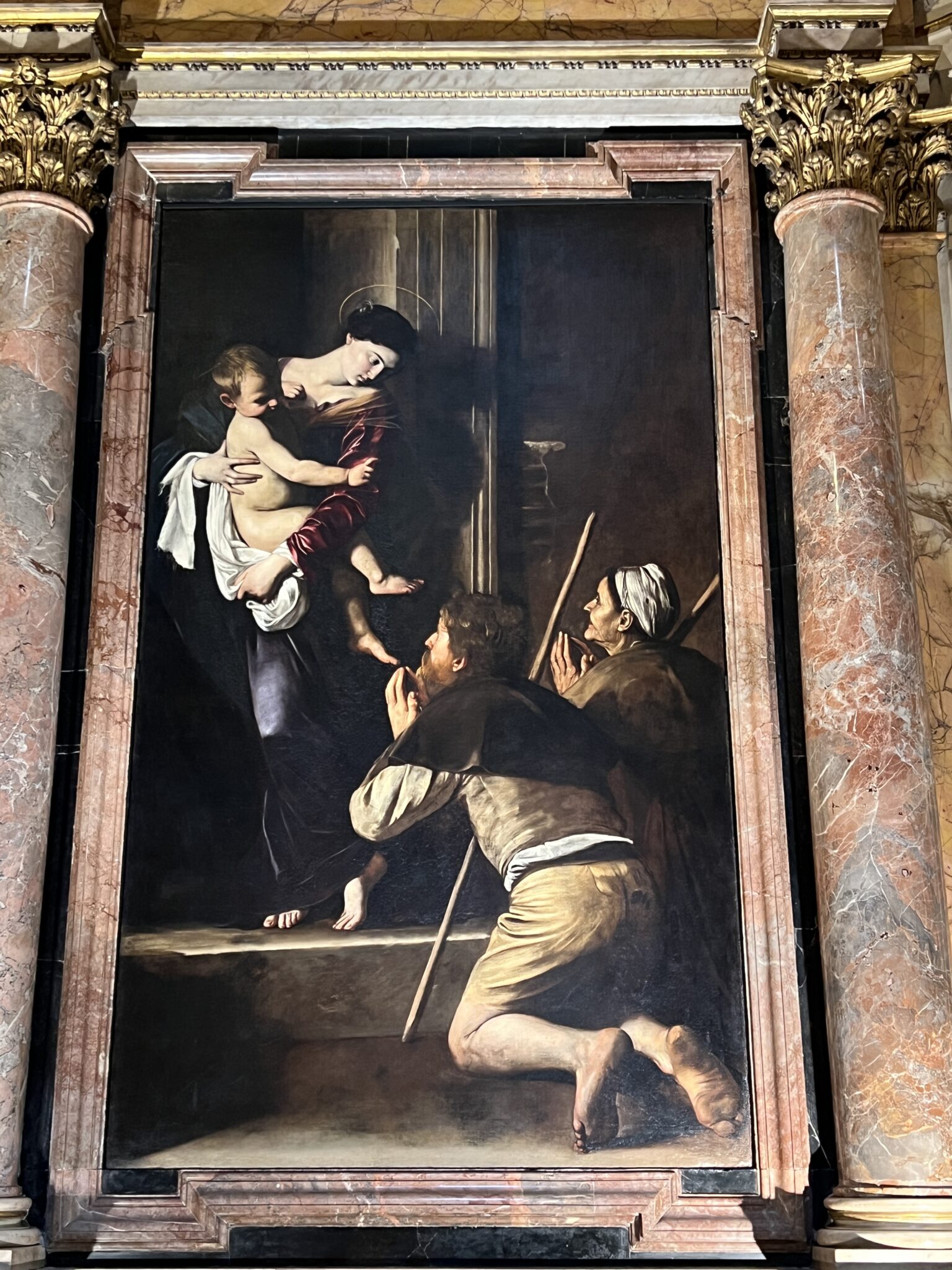
A masterpiece of “tenebrism” with unidealized confrontational figures right up against the viewed plane of the canvass.
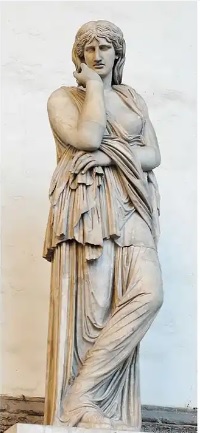 It was a controversial painting in its day. When it was revealed the “popolani”, your basic Joe Bagodonuts, were pretty excited about it. Descriptions of the time say, “ne fu fatto un estremo schiamazzo… there was a real fracas”. It could partly be explain because some thought the model for the Blessed Mother was an not-unknown “call girl”. Whether … that, or an honest girl or Cavaraggio’s main “date” at the time, her name seems to have been “Lena” and she was also the model for Mary in the Madonna dei Palafrenieri in the Borghese collection in which Christ uses her foot to crush the head of a snake. Mighty powerful stuff. Some of the art experts and commentators of the time were outraged that there should be unidealized, strongly naturalistic figure, replete with wrinkles and dirt and tattered clothes. In fact, as one scholar of the painting I’ve read reveals, the model was an ancient sculpture known as the Tusnelda, which also helps to explain Mary’s ivory complexion… she who the Litany of Loreto names as “Tower of Ivory.” Her hands, holding the Child, are based on the hands of the ancient Venus pudica statues which calls to mind the overlapping concepts of both fertility and virginity. She is in a doorway, because if Christ is the primary door, she is the doorway to the doorway to heaven. Another Litany title for Mary is Ianua caeli… Gate of Heaven.
It was a controversial painting in its day. When it was revealed the “popolani”, your basic Joe Bagodonuts, were pretty excited about it. Descriptions of the time say, “ne fu fatto un estremo schiamazzo… there was a real fracas”. It could partly be explain because some thought the model for the Blessed Mother was an not-unknown “call girl”. Whether … that, or an honest girl or Cavaraggio’s main “date” at the time, her name seems to have been “Lena” and she was also the model for Mary in the Madonna dei Palafrenieri in the Borghese collection in which Christ uses her foot to crush the head of a snake. Mighty powerful stuff. Some of the art experts and commentators of the time were outraged that there should be unidealized, strongly naturalistic figure, replete with wrinkles and dirt and tattered clothes. In fact, as one scholar of the painting I’ve read reveals, the model was an ancient sculpture known as the Tusnelda, which also helps to explain Mary’s ivory complexion… she who the Litany of Loreto names as “Tower of Ivory.” Her hands, holding the Child, are based on the hands of the ancient Venus pudica statues which calls to mind the overlapping concepts of both fertility and virginity. She is in a doorway, because if Christ is the primary door, she is the doorway to the doorway to heaven. Another Litany title for Mary is Ianua caeli… Gate of Heaven.
In fact, the man who paid for the chapel, the aforementioned Ermeto Cavalletti, in 1602 organized a walking pilgrimage for members of the Archconfraternity to Loreto, such was their devotion. IIt is not a coincidence that the two pilgrims are male and female, since the Archconfraternity had both male and female members as they do even today. The pilgrims are not incidental in any way, since it was the work of the Archconfraternity to take care of pilgrims: Thus… Most Holy Trinity of the Pilgrims.
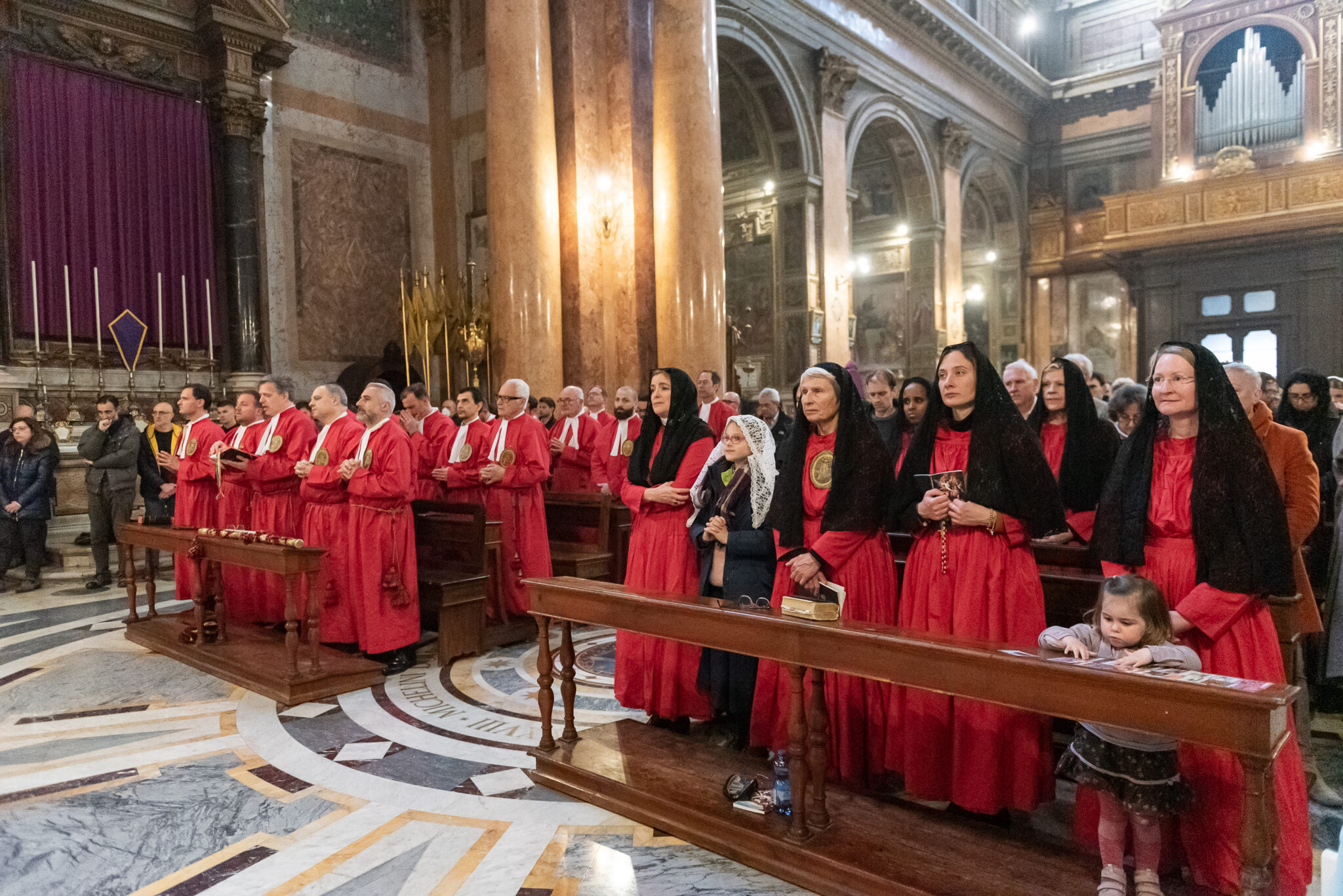
That said, the painting is a visual rhapsody on humility. There is the upper level, of divine humility, incarnate, wrapped in the white cloth that foretells His funeral shroud, and the lower level of human humility with those all important dirty pilgrim feet that draw the eye and heart.
From what I have read, there was in Rome at the time a great deal of concern for and about “the poor”, since there was widespread, serious poverty exacerbated by floods of pilgrims. The Augustinians and many confraternities were heavily involved. This painting reflects a major concern of the time. Even spiritual greats like St. Robert Bellarmine explored the contrast of the “deserving” and “undeserving” poor and their places in society. Caravaggio’s painting of common people reflect those categories, in a sense. Compare his treatment of the “cardsharps” with the Loreto pilgrims.
But I digress.
Yesterday, in Game 8 Ding Liren was dealing Ian Nepomniachtchi a herculean beat-down but, collapsing under the psychological pressure of the moment, snatched a draw from the jaws of victory. It was hard to watch. Once again Ding got into serious time trouble and, again, seemed to freeze up as the clock ticked to FOUR seconds before he moved and made the time increment. Ian was cool and slowly crawled out of the grave as Ding made one inaccuracy after another. The video is bookmarked to the tense time moment.
Chess, my friends. Give this gift to yourselves and your children. Wherever chess boards break out, people stop looking at their phones and gather around to talk (or not, depending on the milieu) and watch. You don’t need electricity!
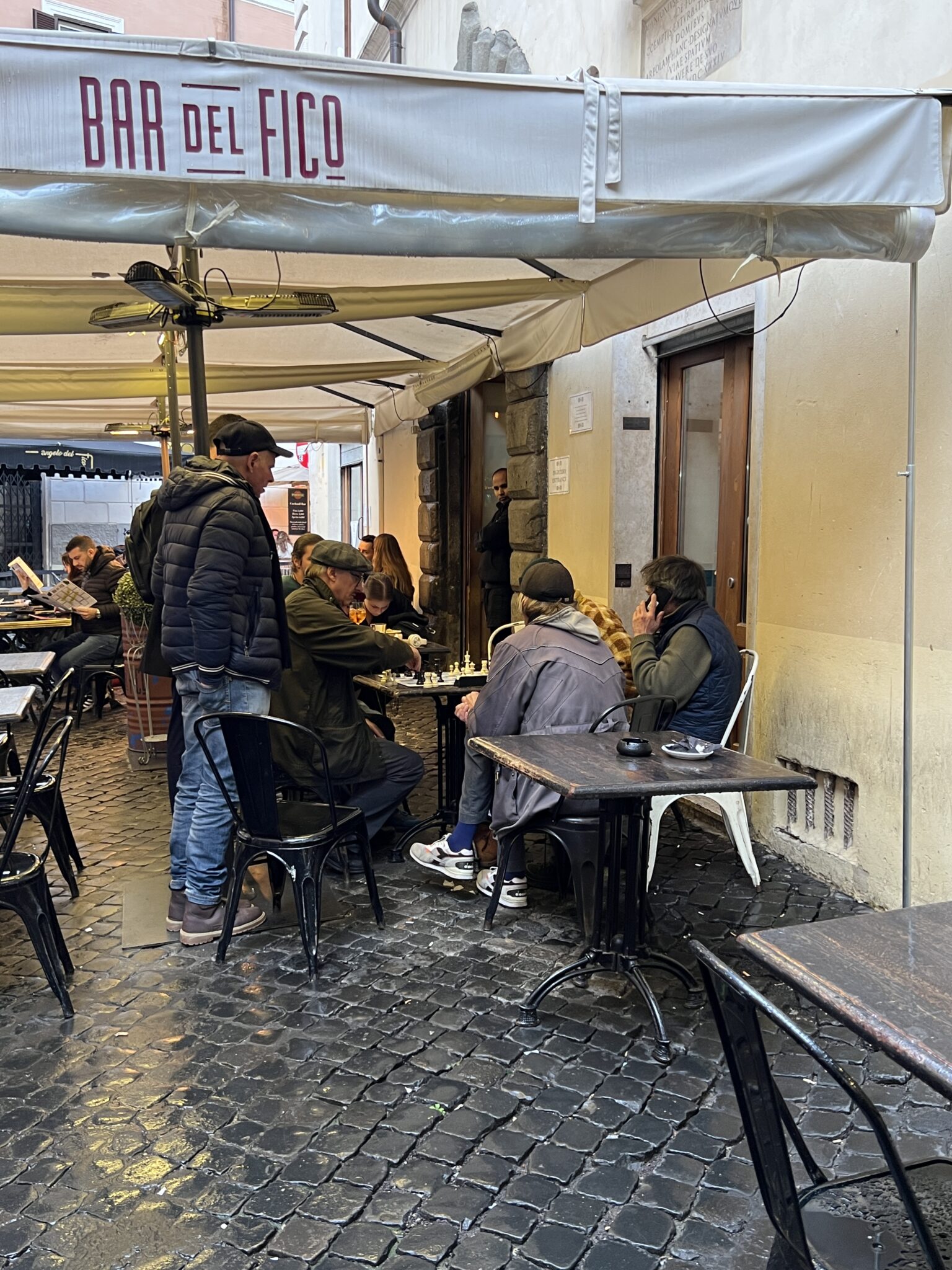
I ask prayers for my Roman Pied-à-terre. St. Joseph! St. Filipo!


































Aw yissss. The good stuff. Dense 16th century scholars.
“To F. Onofrio Panvinio, born of Verona,
Augustinian Hermit,
A man who rescued the antiquities both Roman and Ecclesiastical from darkness,
Who, following Alessandro Cardinal Farnese, Vice-Chancellor (Of the Roman Church) into Sicily, he died at Parma, at a time which was both greatly alien to history and to himself, 18th of the Kalends of April, 1568.
He left many monuments, famous, finished and unfinished, of his industry…”
VIX. ANN. XXXIX. I don’t know what to make of that.
“His friends have placed this for the sake of honouring him.”
Happy Anniversary to Father William Ashley of the archdiocese of Vancouver British Columbia, Canada . 46 years a Priest. Ordained in ROME by His Eminence Edouard Cardinal Gagnon.
For some reason unknown to me, the material we used to learn Latin ignored completely the length of vowels and instead provided graphical accents to guide the pronunciation. Later on, while using texts without the graphical accent, it is very difficult to know the correct pronunciation.
After learning some Latin it is very difficult to go back to the beginning and relearn everything with the long and short vowels and the stressed syllable.
Suggestion. If you will begin to study Latin, don’t ignore short and long vowels.
Thanks for the Caravaggio!